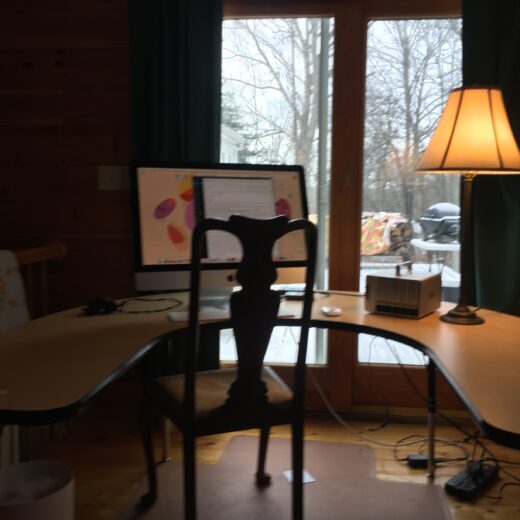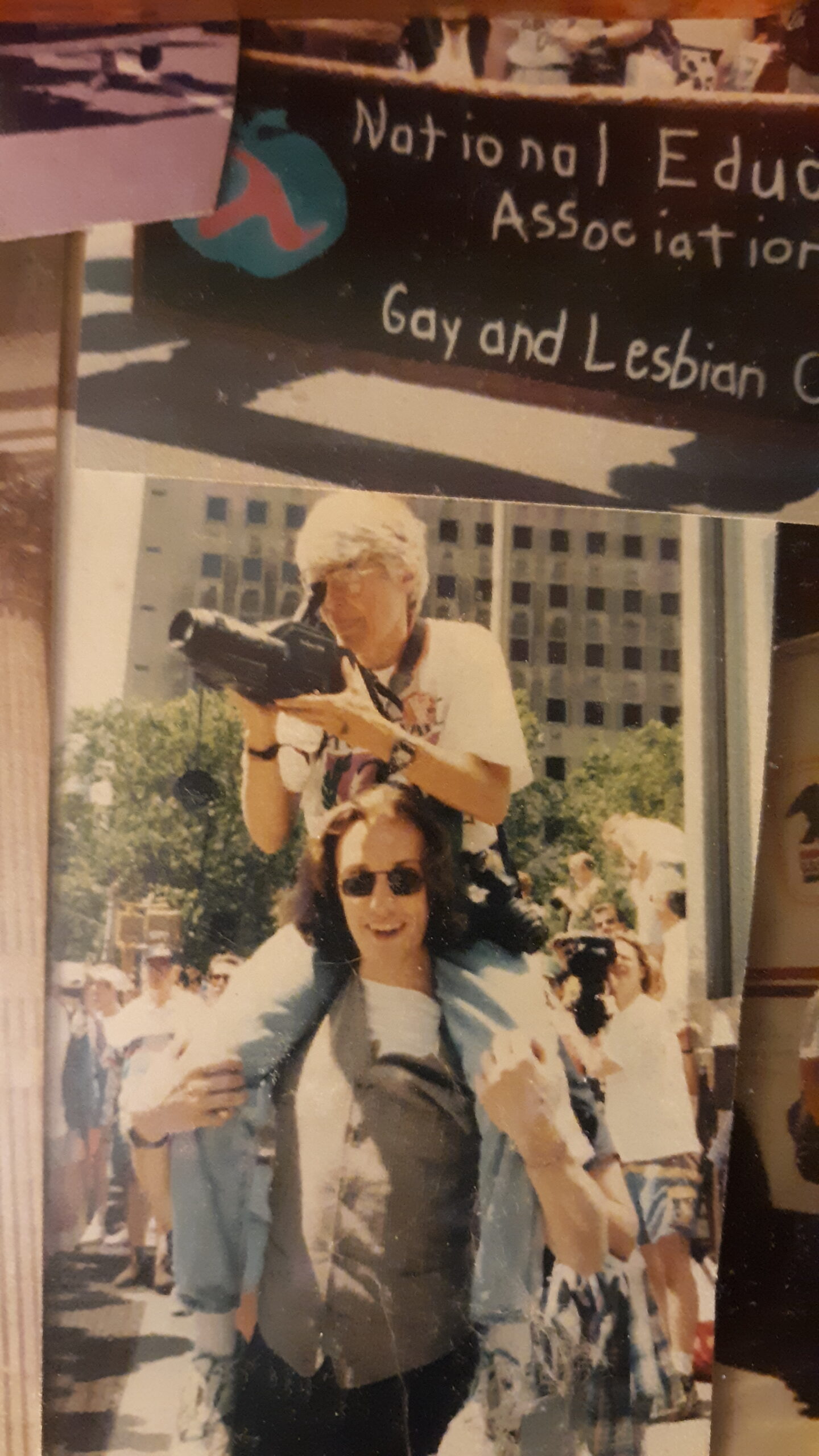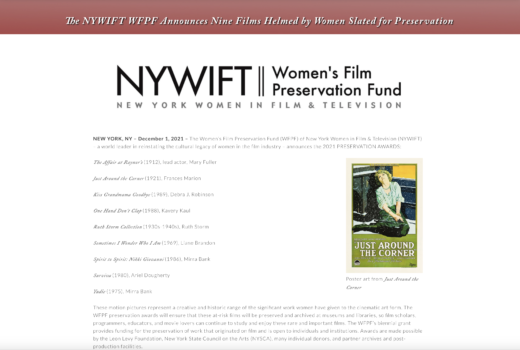 LHMP had planned to go on the road in 2021, screening private treasures we couldn’t stream, seeking more film & tape collections, and expanding our advisory board as the project gathered more friends. The pandemic put a stop to that plan but we’ve been so busy that it’s hard to imagine how we would have pulled the jaunts off in any case. (Gainesville, we’ll get there one day!)
LHMP had planned to go on the road in 2021, screening private treasures we couldn’t stream, seeking more film & tape collections, and expanding our advisory board as the project gathered more friends. The pandemic put a stop to that plan but we’ve been so busy that it’s hard to imagine how we would have pulled the jaunts off in any case. (Gainesville, we’ll get there one day!)
Since our beginnings, we’d relied on an iMac purchased secondhand from a feminist indie filmmaker. We loved that iMac. It came loaded with the venerable editing program Final Cut 7.0.5, and, connected to independent hard drives, it’s worked through thick and thin. But to keep FCP7 running, we had to stick with the original operating system. Inadvertently click yes to a new OS and the jig would have been up. Luckily we’ve never made that mistake and the system worked seamlessly until the latter part of 2020 when several commercial interfaces stopped welcoming our files. Commercial programmers didn’t want to hear our complaints. We had to update our operating system or go dark. We also needed to update our back-up system. We had maintained digital files — uncompressed and H264s — and run FCP through freestanding hard drives. That worked fine except we had to keep adding more and more drives. As our collections grew, that became unwieldy.
In the nick of time, a private donor made a hefty contribution. Above all, that donor wanted us to seek more attention for our collections, but we were free to spend it in part on updating our systems, and we had to in order to continue to stream clips. We didn’t want the latest tech, for fear it would come with problems that hadn’t surfaced yet, but we’d been receiving increasingly large collections so we did want a system that could handle major expansion. We also wanted to combine our motley collection of hard drives into one integrated system.
We’re not super savvy techs here and we didn’t want to make an expensive mistake so we took our time. As we did the research, Apple switched to M1 silicon chips. We’d probably have been fine with the radically new chip. It’s gotten super reviews. But we wanted to stick with the tried and true if we could. When it comes to tech, staying behind the times is rarely easy and it wasn’t. Into the breach came Tom Beal of MacRevival, incredibly just down the road in Ellsworth, Maine. Tom dug around and nabbed one of the last iMacs without an M1 silicon chip on our behalf which he customized to allow us to continue to run most of extant programs. He also assembled a cascading array of hard drives to integrate all our moving image files which had previously resided on separate drives, divided by digital format as well as alphabetically. (One sign it was well past time to upgrade: two 8T drives labeled “overflow,” one in use, the other back-up.) That arrangement remains almost the same, still divided by digital format and alphabetically, but it can now be accessed simultaneously. No more plugging and unplugging and plugging again. No more spider web of dongles & electric cords. (All original tapes and films remain safe in Northeast Historic Film’s climate-controlled vault, or course.) Plenty of room for more, too. Our original iMac still works as well, so we can still resort to FCP 7 in a pinch. But LHMP’s entire collection is now accessible in digital form with one push of a button and we can upload clips seamlessly. At our current rate of acquisition, we’re probably set for another ten years. Thank you, private donor!
Just in time, too. As we worked the kinks out of the new system, two new extraordinary and large collections began to arrive. Emily Greene started sending hers in 2020, and she’s still finding gems amid her papers and memorabilia. Almost forty tapes to date as well as several films and dvds. It’s a remarkable collection primarily shot in two womyn’s land collectives, Pagoda and Alapine, as well as at several Mich Fests, Olivia Cruises, and gay games in Amsterdam and NYC. Emily would do just about anything to capture footage she knew was important. Here, for example, she is shooting the Gay Games/Stonewall in 1994 ensconced on the shoulders of a gay guy who noticed she was too short to get her shots and kindly gave her a lift.

Over the past year, we shared some of Emily’s tapes for the memorials marking the deaths of Dore Rotundo and Ellen Spangler, and we’ll share more selected moments as events and permissions allow over coming months.
One unique aspect Emily ’s videos is her narration. Here’s an example shot in on Vilano Beach in St. Augustine, home of the legendary Pagoda, Temple of Love. It offers a unique view of a gifted amateur videographer learning a new JVC video camera while giving three energetic dogs a romping good time.
Most recently, Emily has teamed up with film aficionado Roberta Pato to create a compilation of her films. Their effort underlines an important point: The majority of LHMP’s moving image makers intentionally shot and painstakingly saved their footage; many are still alive; and some hope to work with their footage further. Typically they are the makers: the authors. Moreover, everyone in footage shot in private circumstances has the right to choose how their images are used during their lifetimes. We post footage to get the word out about the project and share the visions of the lesbian past captured in the collections. We love when the clips and reels are appreciated. But three times in the past year young filmmakers have found our clips and helped themselves. In two cases, the appropriators blatantly misrepresented the underlying history. That’s not ok. Everybody involved has to agree before any footage in our collections can appear in other work or be streamed or shown. Makers, participants, and the project must be credited, and if money is involved, there are fees. We have to be tough about this and we are.
In May, Terry Grant, who founded the beloved womyn’s music distribution company Goldenrod, entrusted LHMP with her collection of well over fifty tapes documenting the rich social, personal, and musical tapestry of her work and life. We’re still doing background research and just starting to gather permissions so it’s too early to share much but here you can enjoy a few seconds of Terry paddling Utah’s Green River in 2001. (She and partner Sue were with a bunch of pals but we haven’t gotten all the necessary permissions to share that footage yet.)
And here, for a moment of the love that has inspired so much of this project, are Terry and Sue dancing at their 25th Anniversary party in 2001.
LHMP also enjoyed some very happy successes in 2021. Three of our moving image makers – Mary Lu Lewis, Janet Prolman, and Lorraine Sumner – had footage LHMP preserved, digitized, documented, and archived featured in episodes of the wonderful production PRIDE directed by Tom Kalin and Cheryl Dunye, and produced by Christine Vachon. Brilliant social scientist Arlene Stein joined our advisory board. And at the very end of this claustrophobic year, the NYC footage from the Ruth Storm Collection that set us on the hunt for lesbian home movies and amateur films a little over a decade ago won a New York Women in Film Preservation Grant.

The grant will allow us to finance a film-to-film transfer of Ruth Storm’s 16 mm NYC footage, which suffers from vinegar syndrome. We’ll need another grant to transfer the rest of Storm’s footage that’s affected but we’re on the way. We can’t thank NYWIFT enough.
Now! Ready for more footage!